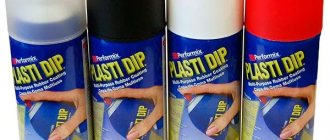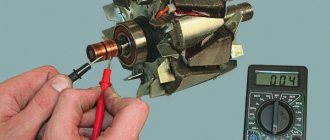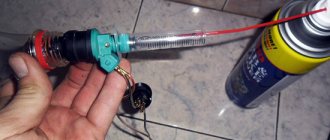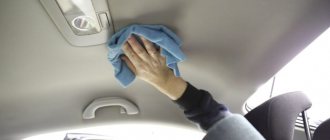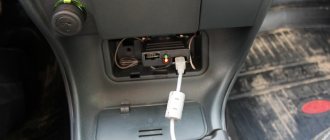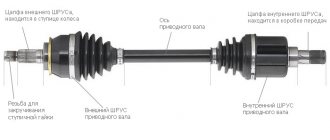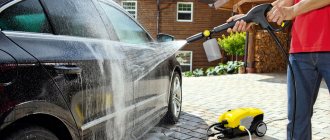Winter had just ended with its problems in the form of corrosive reagents from the roads, and motorists were able to breathe a sigh of relief, when another, no less serious problem appeared on the horizon. These are poplars, and not even the tree itself, but its buds.
Unlike pollen of various flowers, debris, and insects, dark resinous stains from poplar buds are very difficult to remove from the surface of the body. Many people are interested in the question of how to wash poplar buds from a car.
Today there are a lot of different chemical cleaning products for cars, but not always a car enthusiast can purchase these products. In this case, you can use folk recipes.
The danger of poplar buds
If these same buds get on the surface of the body, they will leave brown spots, which are very difficult to remove. The resin that is inside the kidney very quickly eats into the paintwork and methodically destroys it.
It is very important that the car can avoid contact with this rather aggressive plant. Otherwise, the owner will have to think about how to wash poplar buds from the car. Several methods and solutions are proposed to get rid of this spring scourge and eliminate any contact with this “garbage”.
How can you wash linden, poplar and pine from the surface of your car at home?
There are many examples of the use of household or pharmacy chemicals. Why is this direction attracting more and more car owners? The fact is that the properties of some drugs are not inferior to analogues from thematic auto chemical products, and their price is several times less. To be fair, we can give an example from a related area: how to polish plastic headlights yourself by hand - with toothpaste for several tens of rubles or a polishing kit for several thousand rubles?
So, you can wipe off poplar resin without a trace, traces from linden or glue from pine onto fresh:
- Ammonia (a solution of ammonia in water).
- Alcohol solution of boric acid (3%).
- Blue clay.
Coming closer to the technology of using this chemistry, the following point arouses interest: are they able to wash off the resin without harming the paintwork. Will this treatment leave various scratches and dull abrasions on the surface of the body?
Clay or medicines
When comparing contenders based on the level of damage caused to paint, clay is a clear outsider. It removes Velcro due to friction. When using alcohol and acid, there is practically no trace of it (it takes a little effort to wipe the stain, and the main mechanism for removing the tar residue is to dissolve it within 10-20 minutes).
Blue clay is often associated with a hologram effect. They say that if you rub in a circular motion, the treated surface will be noticeably different from the untreated one. In theory, it is necessary to scrape off poplar glue and resin residues from other trees only with translational longitudinal movements, without strong pressure, after first moistening the defective area with a soap solution.
In theory, following these rules, the treatment should pass without a trace for the paintwork. But in reality, many observe the opposite - there is a hologram. It is very visible in the sun, on black metallic, and completely undetectable on a white car. Therefore, dark cars require final polishing of the body.
Ammonia and boric acid do not spoil paintwork at all. Negative reviews about them are associated with ignorance of the technology, how to remove poplar buds or Velcro from linden or pine from the surface of a car with your own hands. There is only one remark about the drugs - they act slowly.
What about petroleum based solvents?
Products of petroleum origin and tree resin are reluctant to be washed off. We are talking about such varieties as:
- White Spirit.
- WD-40.
- Kerosene.
- Petrol.
- Carburetor cleaner.
Universal white spirit will only save you from minor contamination. If they can still remove a fresh tarry trace, then even a two-day-old trace of a solvent-like liquid cannot be removed. WD-40, gasoline, kerosene and carburetor cleaner do a better job than white spirit, but they are far from being as effective as medications.
Other means
The global automotive and household goods industry does not stand still. For example, wet wipes with alcohol appeared relatively recently. In the fight against fresh marks, they have proven themselves to be a good remedy. You just need to brush off the buds so that they don’t open. How to do this is one of the topics of further discussion.
Automotive stores also have interesting, modern items for removing stubborn stains. For example, a towel or anti-scrub mitten. The rubberized product copes well with tar stains, but again cleans due to friction. Therefore, the issue with mechanical polishing is not closed.
How to avoid “poplar aggression”
The best and most popular way to avoid any problems caused by these same kidneys is to completely eliminate the possibility of them getting on the body. When choosing a parking spot, you should avoid those under these trees. You can park a car under others - only poplar leaves stains. But this is in an ideal situation.
Also, to avoid stains, it is recommended to use car covers.
Polyethylene is suitable for this outdoors. They can cover the roof and hood. The edges can be pressed against the door and hood.
To minimize the damage, so that you don’t have to think about how to clean poplar buds from your car later, it is recommended to cover the surface of the body with long-acting polishes. This product creates a thin film that will protect the surface for three months.
These products are made on the basis of Teflon, nanoparticles, and liquid glass. In addition, these products will also help protect the body from minor scratches and car paint fading in the sun.
Another popular method of protection is gluing a special film. If it is done well, then this will preserve the quality of the coating for several years from physical and chemical exposure.
Precautions against bitumen
Prevention of bitumen deposits can be carried out in several ways:
- It is better to go around sections of roads covered with fresh asphalt or slow down to 40-50 km/h.
- Avoid frequent rotation of the steering wheel on such unfavorable parts of the road surface, as this increases the likelihood of bitumen getting on the wheel arches and sides of the car.
- Maintain a distance of 1-2 m from other cars on the highway.
- Stay away from vehicles carrying hot bitumen.
- Cover the car with wax. It is much easier to remove bitumen stains from such a surface.
- Apply a protective film to vulnerable areas, which will protect your car not only from bitumen, but also from pebbles and other particles. Particularly susceptible to the appearance of bitumen stains are the sides of the car, rims, sills and wheel arches.
- You can protect the paintwork for a long period by covering it with special liquid glass (five-year warranty).
How to clear kidney stains?
If it was not possible to avoid the problem and the buds have already reached the surface, then you should start removing them. This process must be started as early as possible, otherwise the resin will stain the paintwork. And then you will have to think not about how to wash the poplar buds from the car, but about the cost of repainting the car body.
Kidney damage is very critical for light-colored cars. These stains will be very noticeable on the body.
The easiest way is to clean it at a car wash. Often, professional cleaners know a good and effective way to combat this problem. But again, this is in an ideal situation.
But if the question is about how to wash poplar buds from a car at home, then the car owner will have to visit the auto cosmetics department. Typically, stores offer specialized cleaning products to combat the most serious stains and various types of dirt. When choosing such products, you should immediately make sure that, along with a huge number of stains, they also remove organic tar and grease stains. If the product is specially designed for poplar buds, then it is worth purchasing it.
What you should not buy are imported products from European manufacturers. Residents of Europe do not face such a problem, but the Russians are familiar with it firsthand. Domestic products are quite effective and successfully cope with this problem, and they are inexpensive.
Drug "Antitopol"
These formulations are ideally formulated for tasks such as removing poplar bud stains.
They are fighting this problem as effectively as possible. They work and are popular, but the result will be if the stain is less than a year old. Nothing can deal with one-year-old spots.
Important: do not delay removal and do not try to wipe off the resin mechanically - this will only damage the paintwork.
Special active foam: effectively remove kidney stains
Probably, many car enthusiasts have high-pressure devices in their garage or private home and these people wash their cars themselves. There is a special preparation, an additive to the main shampoo, which effectively copes with traces of any insects and poplar buds. The product is sold in any auto stores.
Among the obvious advantages of this composition for combating kidney disease is the complete absence of any damage to the paintwork of the body. Also, using the composition will not cause difficulties and is ideal for use at home. With a high-pressure washer and this product, you won’t have to think twice about removing traces of poplar buds from your car. It's reliable, simple and effective. But not everyone has such a sink. For those who don’t have it, you’ll have to look for folk recipes.
Note: test review of automotive resin cleaners
The magazine "Behind the Wheel" tested products from various manufacturers. The essence of the test procedure was to evaluate the effect after using the drug in full accordance with the instructions. Resin cleaners from the following companies took part in the “race”:
Conventionally, products are divided into two groups: fast-acting (Astrochem, Liqui Moly, Kangaru, Avtoprofi, Sonax, Pingo), requiring long exposure (Grass, Tekson). Theoretically, the following is expected: the former do not drain, concentrating the entire volume on the affected area, the latter dissolve stains more effectively, but require more consumption. Practice confirms this.
When choosing, it is important to consider the smell. The procedure for interacting with the drug is often slow, so the aroma should not be strong. Everything is aimed at not causing discomfort to the operator, especially in the heat. The mixture from Astrohim most accurately satisfies these conditions.
Almost all compositions cope with the task with dignity. However, there are still favorites - Texon and Astrohim. At a minimal price, they fulfill their purpose as transparently as possible. Let Tekson complete the task with a significant amount of time (withstand at least 5-10 minutes), but he washes off poplar resin and road petrochemicals the first time.
Source
"White Spirit"
This popular product works much more gently than household aggressive liquids.
It will not damage the paint and copes well with bitumen stains. But there is an opinion that “White spirit” still copes with kidney stains, and does it well. If you don’t want to go to the store for specialized auto chemicals or have nothing to wash poplar buds from your car, then this is the best way. You can safely use it without fear for the body coating.
What not to scrub
Poplar stains on a car are formed due to the fact that the sap of the falling buds (bud scales) of this tree contains organic resin and essential oils. A similar situation is observed in chestnut. The resin is known to be very sticky and difficult to wipe off, including from the paintwork of the car. And essential oils are chemical (organic) solvents, which makes the situation even worse.
Resinous traces are especially visible on the paintwork of light and dark tones, especially white.
Therefore, in order to remove poplar from a car, you need to choose a product that is strong enough, but also such that it does not damage the paintwork. First of all, you need to know what products should never be used to remove tree resin from your car. Thus, “heavy artillery” includes:
- acetone;
- White Spirit;
- solvent 646 and its analogues;
- solvent;
- kitchen stove cleaner.
The reasons why you cannot use the listed products are that the purpose of the listed compositions is precisely to dissolve varnishes and paints. In this case we are talking about varnish in the paintwork of a car. After this treatment, matte spots and even small white stripes will appear on it.
In addition to chemicals that should not be used, you also need to remember that you should not rub the paintwork using rough abrasives - hard kitchen or cleaning sponges, “hedgehog” sponges, sandpaper. The result of this action will be minor scratches, that is, damage to the paintwork. Instead, you need to use soft fabrics and/or microfiber .
Ineffective means
Many car owners, in order to wash poplar resin from their cars, use chemical cleaners intended for other purposes, for example, dishwashing detergents, glass cleaners, and so on. They can be divided into two categories - those that do not help at all and those that help partially (with little effectiveness).
So, completely useless poplar cleaning products include:
- dishwashing detergents;
- glass (window) cleaning products;
Partially useful compositions include cleaners for bitumen stains and insect marks on the windshield. These products show varying effectiveness, from complete “zero” to good results.
An interesting and inexpensive way
Here is another rather interesting method for those who do not know how to wash poplar buds from a car.
For this you need a construction hairdryer, although you can get by with a household one.
So, the stain should be warmed up, then it should be carefully wiped off with a cotton swab dipped in ammonia. Next, you need to quickly wipe the area. It is best to wash it with soapy water.
Why must the resin be removed before polishing?
Special literature often contains warnings against polishing dirty coatings. And this is completely no coincidence, since the resin, if you try to remove it with a polishing wheel, will heat up, melt and stain the entire body.
Do not attempt to remove resin by sanding. Particles of softened tar will bind the abrasive and begin to leave deep scratches. After this, further polishing may be futile.
It is better to preheat old resin with a hairdryer, but this must be done very carefully so as not to burn the paint. It is enough to heat the resin to 40-45°C and it will already become soft. In this form, it will be much easier to wash it off with antisilicone.
Before applying protective polishes, it is very important to degrease the surface of the paintwork. In this case, you need to immediately go over with a clean napkin to remove the greasy film. Otherwise, the polish will not last long.
A few important rules
If a car enthusiast has already figured out how to wash poplar buds from a car and has chosen the best option for this, it is necessary to follow several basic rules. They will help not harm the body coating.
So, you should not start the cleaning procedure in direct sunlight. It is better to do this in a garage if the sticky stain was not removed immediately for some reason. Next, do not scrub the stain with zeal.
This can damage the paintwork. You need to work slowly and effortlessly. If alcohol is chosen as the main cleaning agent, then to be safe, it is better to dilute it with water.
Before starting work on the surface, you should wash the body with water and some detergent. This will degrease the area. Also, the procedure should be repeated after removing the stain.
And the last thing that can be said about this. It is best not to park cars under these trees. But if there is no other option and is not foreseen, then antibacterial wipes will help. They can quickly and effectively get rid of these problems. And if the stains are old, then now you know how to wash poplar buds from your car quickly and effectively.
So, we figured out how to deal with this problem.
Insects. Evil is in their blood
Insects are such a nasty thing. If in the city they are annoying, then outside the city they simply harass motorists. A cloud of midges instantly deprives the driver of his vision, and at high speed such a “surprise” is a direct road to an accident. Water and wipers cannot cope with the mess of broken insects. It can be done quickly only with the use of special detergents. And if insects break on a hot hood, then a new risk arises: the mush quickly combines with the softened varnish, and along with it, hard inclusions - chitin and dirt - penetrate into the paint.
Coca-Cola has proven itself to be a great cleaner. It is also suitable for removing insects from the hood and windshield. The part that needs to be washed is first washed with water to wash away debris. At the second stage, the surface is moistened with a drink. Give it a little time to work and rinse off with plenty of water.
Insects need to be removed using special means and as often as possible so that the caustic porridge does not have time to penetrate the varnish. If a car with insects sits in the hot sun for several days, you cannot clean it yourself, because there is a risk of damage to the paintwork. The right decision is to take the car to a detailer. There it will be washed using a special shampoo, and damage, if any, will be polished.
Myth. Regular dish detergent and a dish sponge will wash insects off the hood in one go!
Is it true. If at the moment of contact with the insect the surface was cold, and the traces are washed off immediately - fresh, then yes: no consequences will happen and “Fairy” will cope. But if the insects accumulated on the already hot hood, and even “fried” in the sun in a traffic jam, then you need to go to the car wash without delay. Before washing, all flip flops should be treated with special insect removers. And be sure to read the instructions!
How to protect your car from insects?
The most troublesome way: clean the LPK every day using special cleaners. However, even with this approach, the safety of the varnish is not guaranteed. A more reliable option: cover the body with a protective compound or films.

